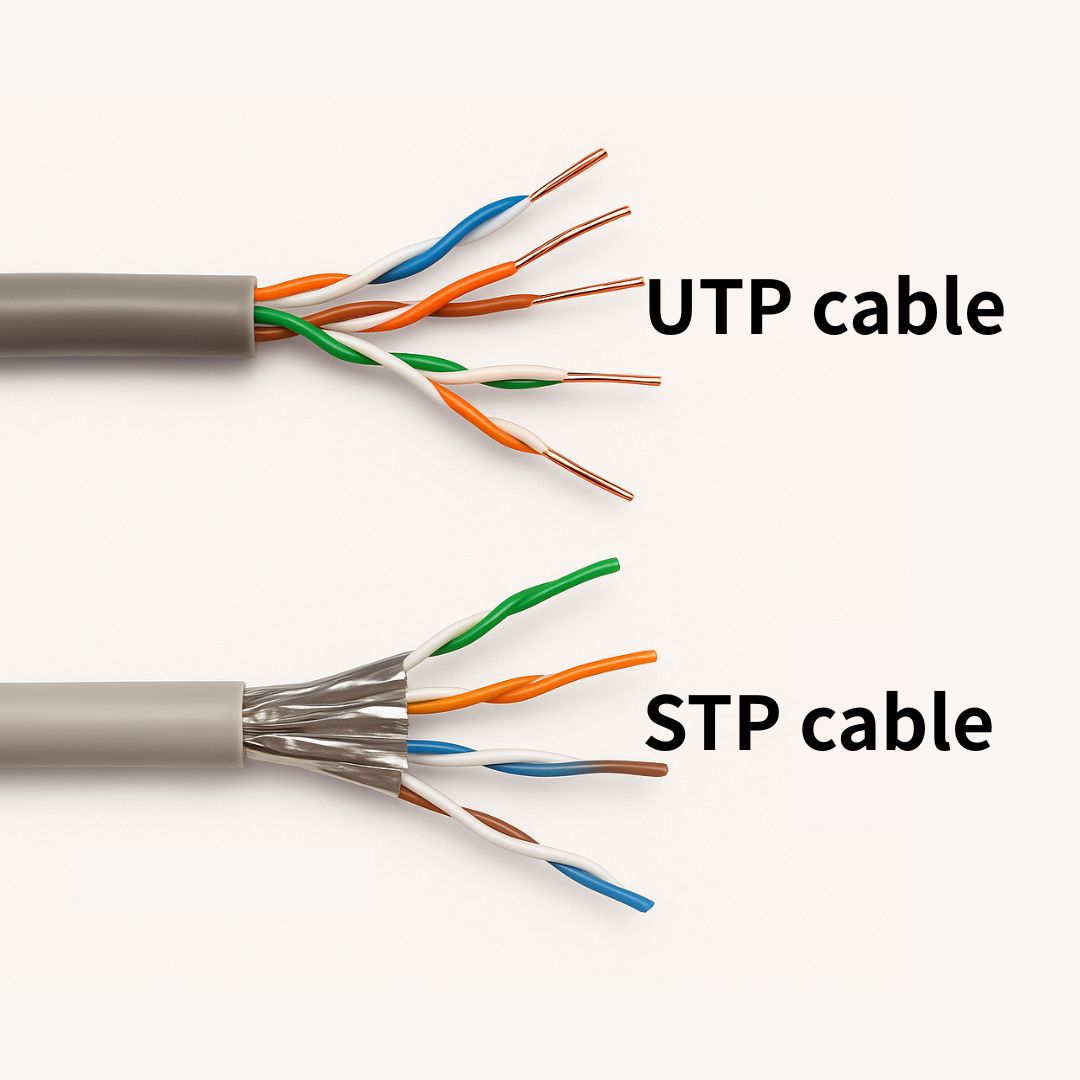Shielded vs. Unshielded Cables: When and Why It Matters
Shielded vs Unshielded cables: When and Why it matters
In today’s connected world, cables may seem like a simple component of a complex system. But anyone who works with communication networks, electronics, or industrial machinery knows that not all cables are created equal—especially when it comes to shielding.
This article will help you understand the key differences between shielded and unshielded cables—and most importantly, when and why shielding matters.
What Is Shielding in Cables?
Shielding is an added layer—usually made of metal foil or braided mesh—that surrounds the inner conductors of a cable. Its primary purpose is to block electromagnetic interference (EMI) and radio frequency interference (RFI) that can affect the performance of electronic systems.
Interference can come from various sources: motors, fluorescent lighting, power lines, even other nearby cables. Shielding acts as a protective barrier, maintaining the signal integrity inside the cable while reducing the chance of crosstalk and external noise.
Unshielded Cables (UTP): Simplicity for Low-Noise Environments
Unshielded cables are the most common type used in structured cabling systems. Instead of a shielding layer, they rely on the precise twisting of wire pairs to reduce noise.
Advantages of UTP cables:
- Cost-effective
- Lightweight and flexible
- Easier to install and terminate
- Ideal for shorter runs or controlled environments
Best used in:
- Office LAN networks
- Residential wiring
- Standard telecommunications setups
When the surrounding environment is clean and interference is minimal, UTP cables are often the most practical and economical solution.
Shielded Cables (STP): Extra Protection Where It Counts
Shielded cables are built to handle more demanding conditions. The added layer of foil or braid protects the signal from external interference and prevents the cable itself from emitting noise that could affect nearby electronics.
Advantages of STP cables:
- Superior performance in electrically noisy environments
- Lower signal attenuation and better transmission over long distances
- Enhanced durability for rugged applications
Best used in:
- Industrial plants with motors or machinery
- Data centers and server rooms
- Hospitals and laboratories
- Outdoor or underground cabling
- High-speed or sensitive data applications
However, shielded cables require proper grounding. If not grounded correctly, the shielding may actually introduce more noise into the system rather than eliminate it.

Choosing the Right One: UTP or STP?
The key to choosing between shielded and unshielded cables is understanding your environment and application.
|
Environment |
Recommended Cable |
|
Standard office or home use |
UTP |
|
Heavy machinery nearby |
STP |
|
Outdoor cable runs |
STP |
|
Data center racks |
STP |
|
Short desktop patch cables |
UTP |
Shielding is not always necessary, but when it is, the benefits can significantly impact the reliability, speed, and lifespan of your system.
Why This Matters for Procurement and Engineering Teams
For engineers, choosing the right cable type ensures long-term system stability. For purchasing departments, balancing performance and cost is essential. Using STP where UTP would suffice increases cost without real benefit. On the other hand, using UTP in noisy environments may lead to performance failures, downtime, or costly troubleshooting.
How We Can Help
At Line Tech Industrial, we specialize in producing high-quality UTP and STP cables for a wide range of industries. With nearly 40 years of experience in cable manufacturing, we understand that one size doesn’t fit all. Our team can help evaluate your usage environment and recommend the most suitable cabling options—customized to your specific needs.
We also ensure that our shielded cables are tested for EMI performance, insulation integrity, and long-term durability, giving our clients the confidence to use them in mission-critical applications.
Final Thoughts
The choice between shielded and unshielded cables might seem small—but it can make a big difference. Whether you're outfitting a simple office or building a factory-wide network, knowing when and why shielding matters is key to ensuring efficiency and preventing costly errors.
Need guidance or want to request a sample?
👉 Contact us today— Email: info@linetech.com.tw
Connect with us through Linkedin for more industry updates: Line Tech Industrial Corporation Limited
